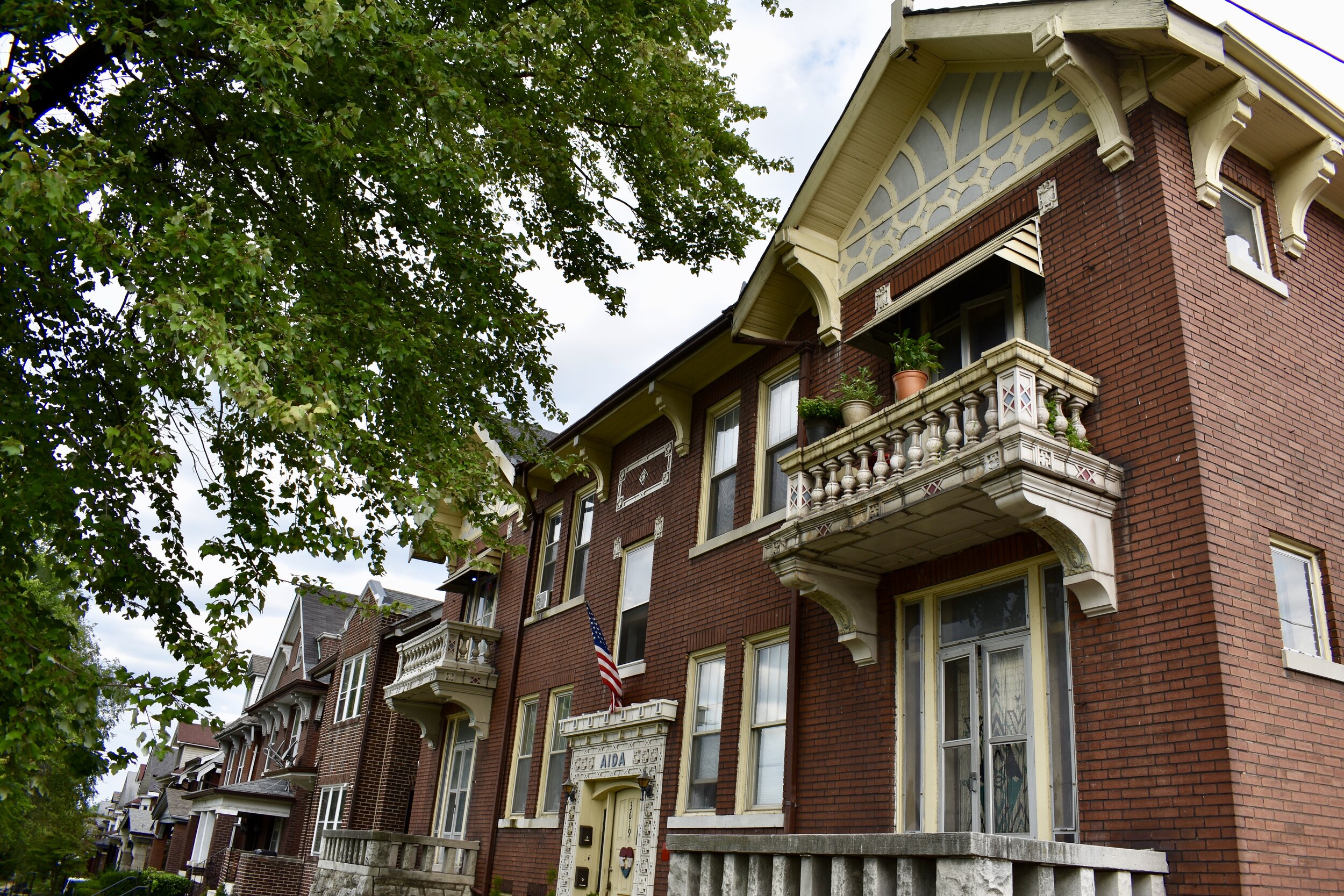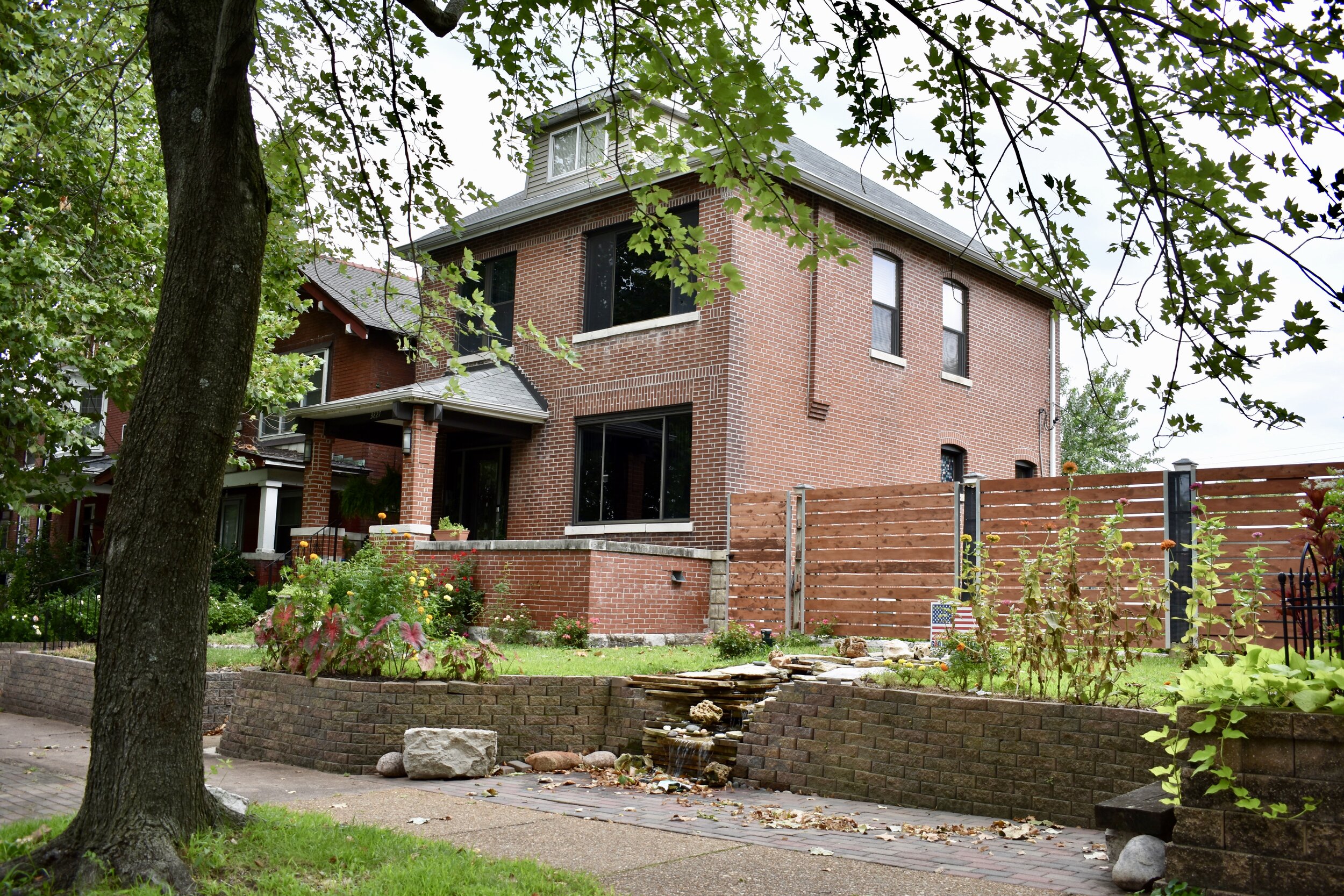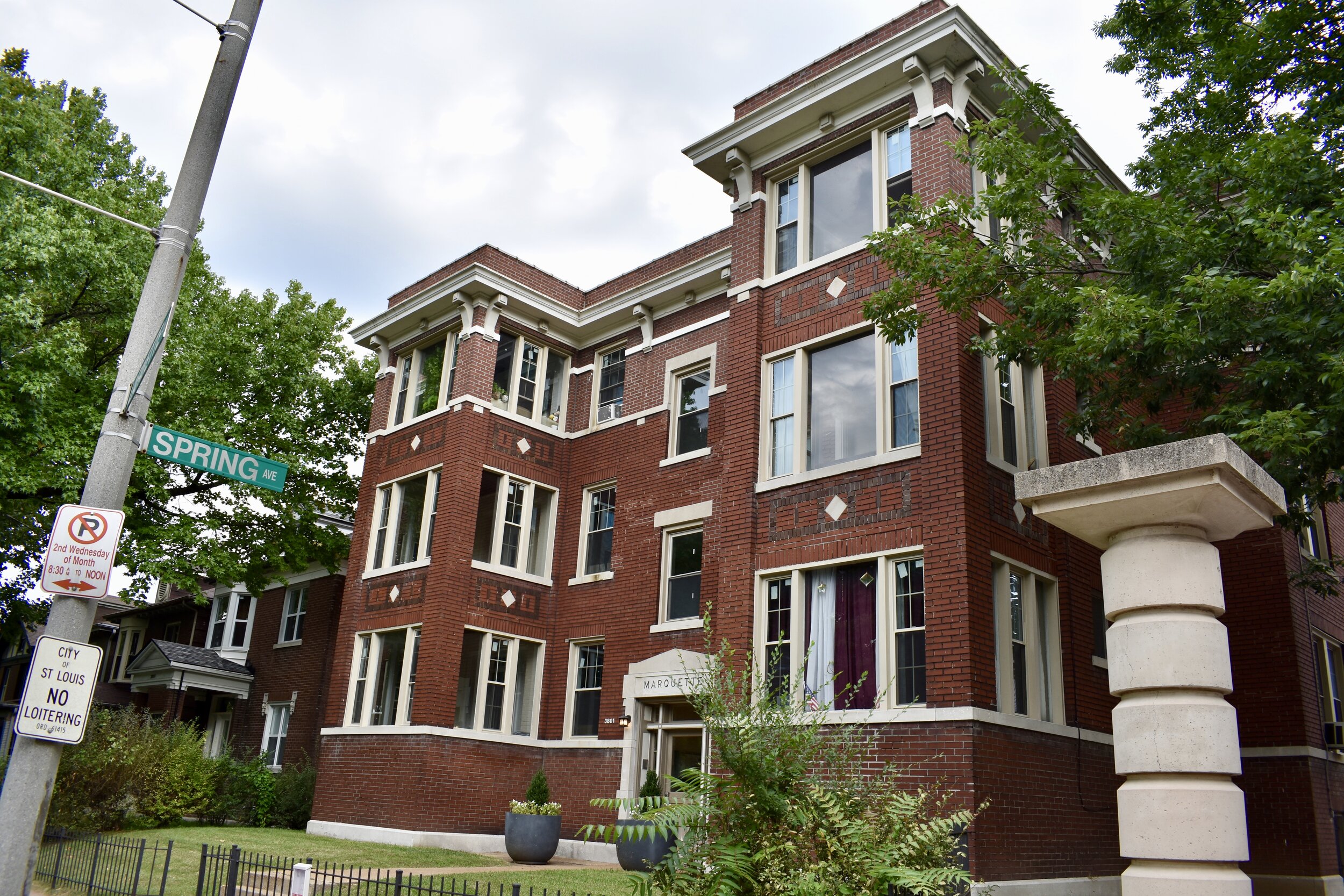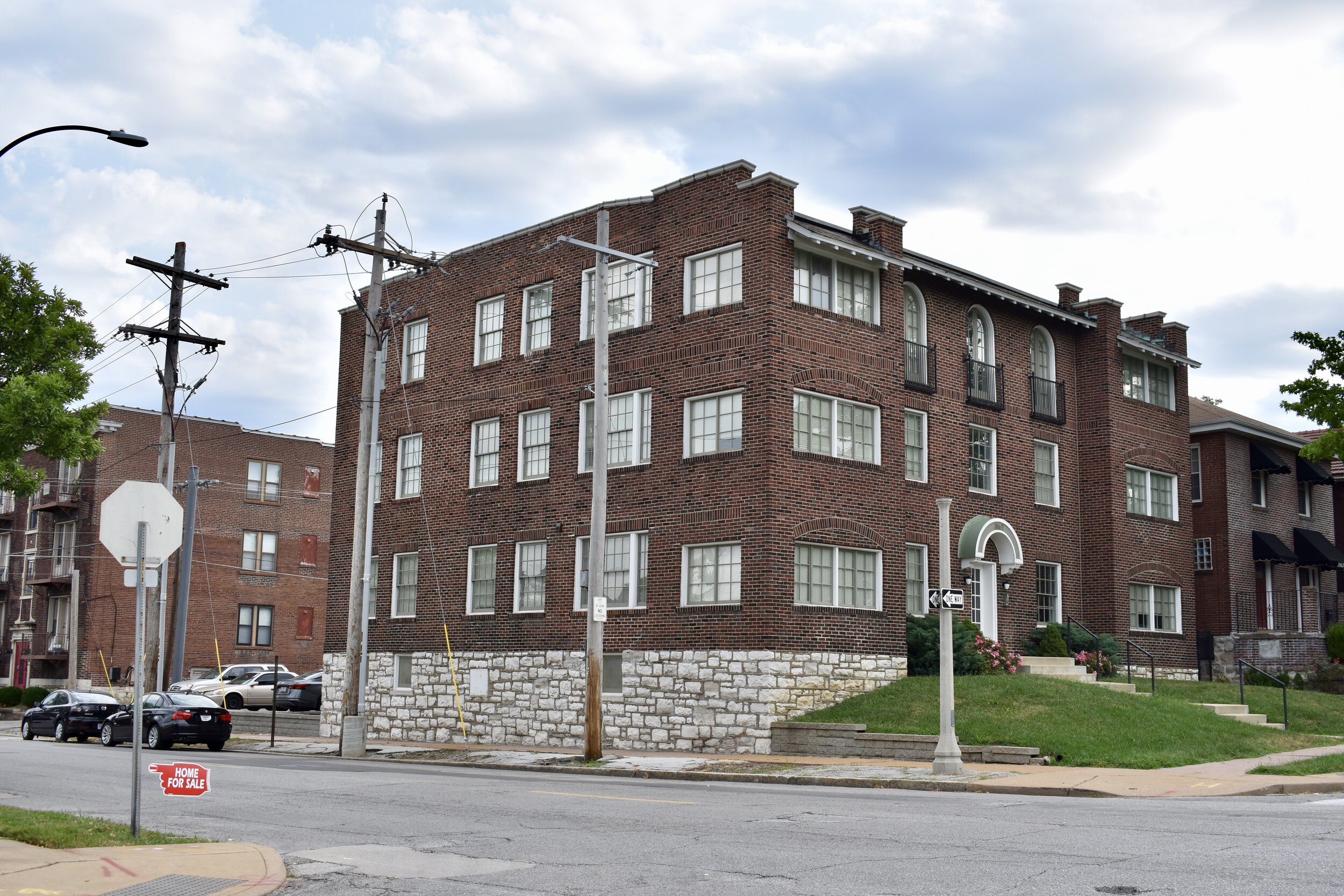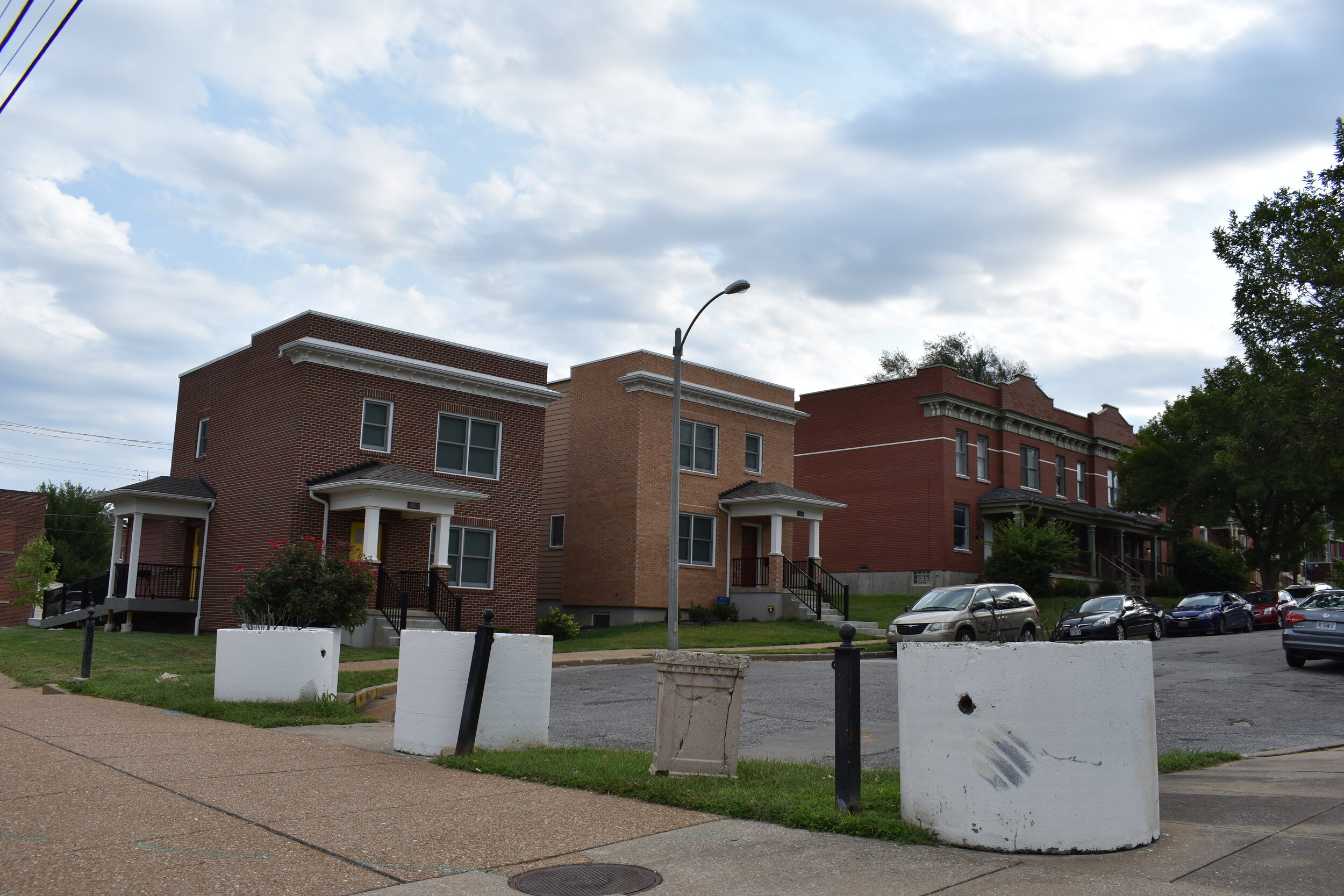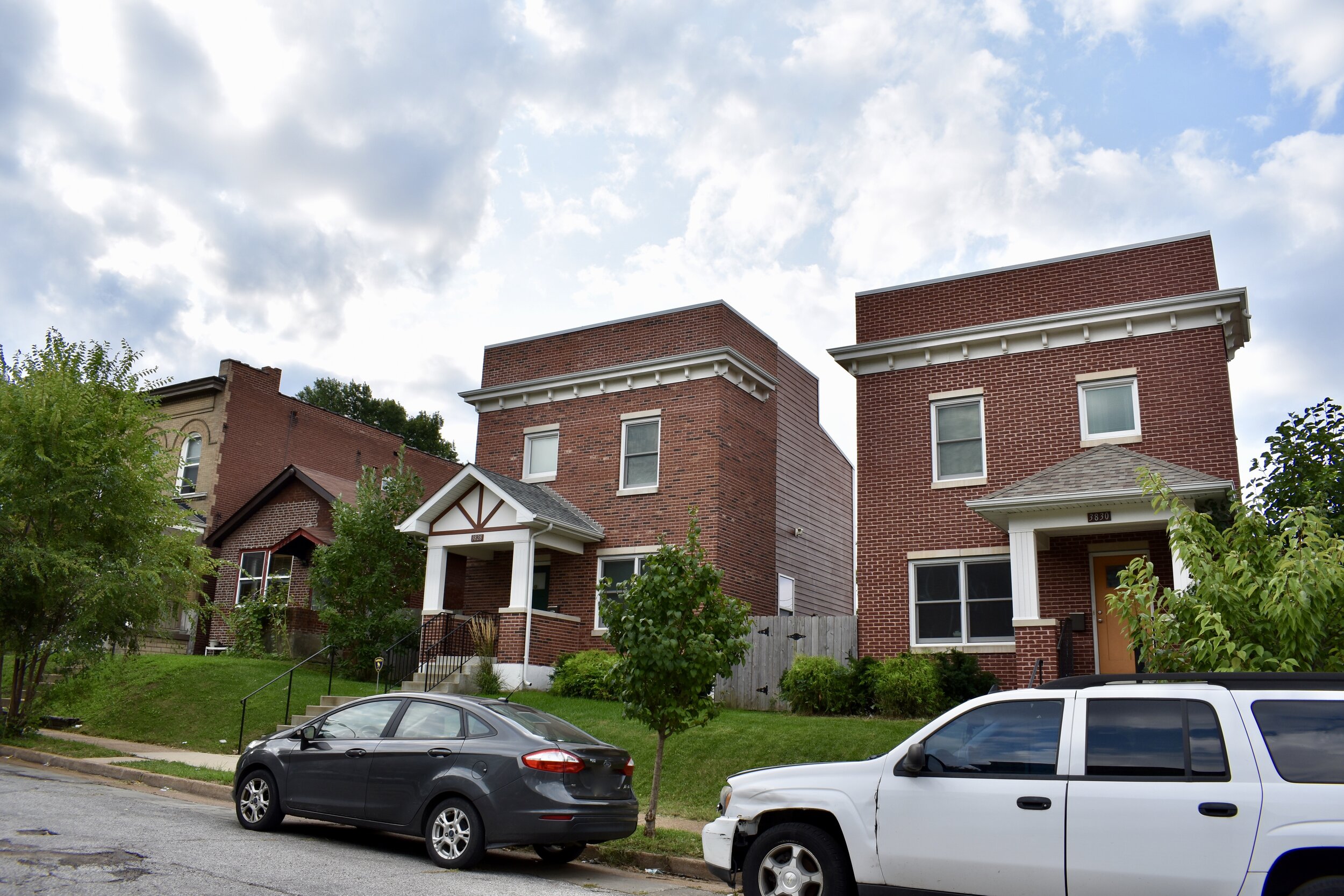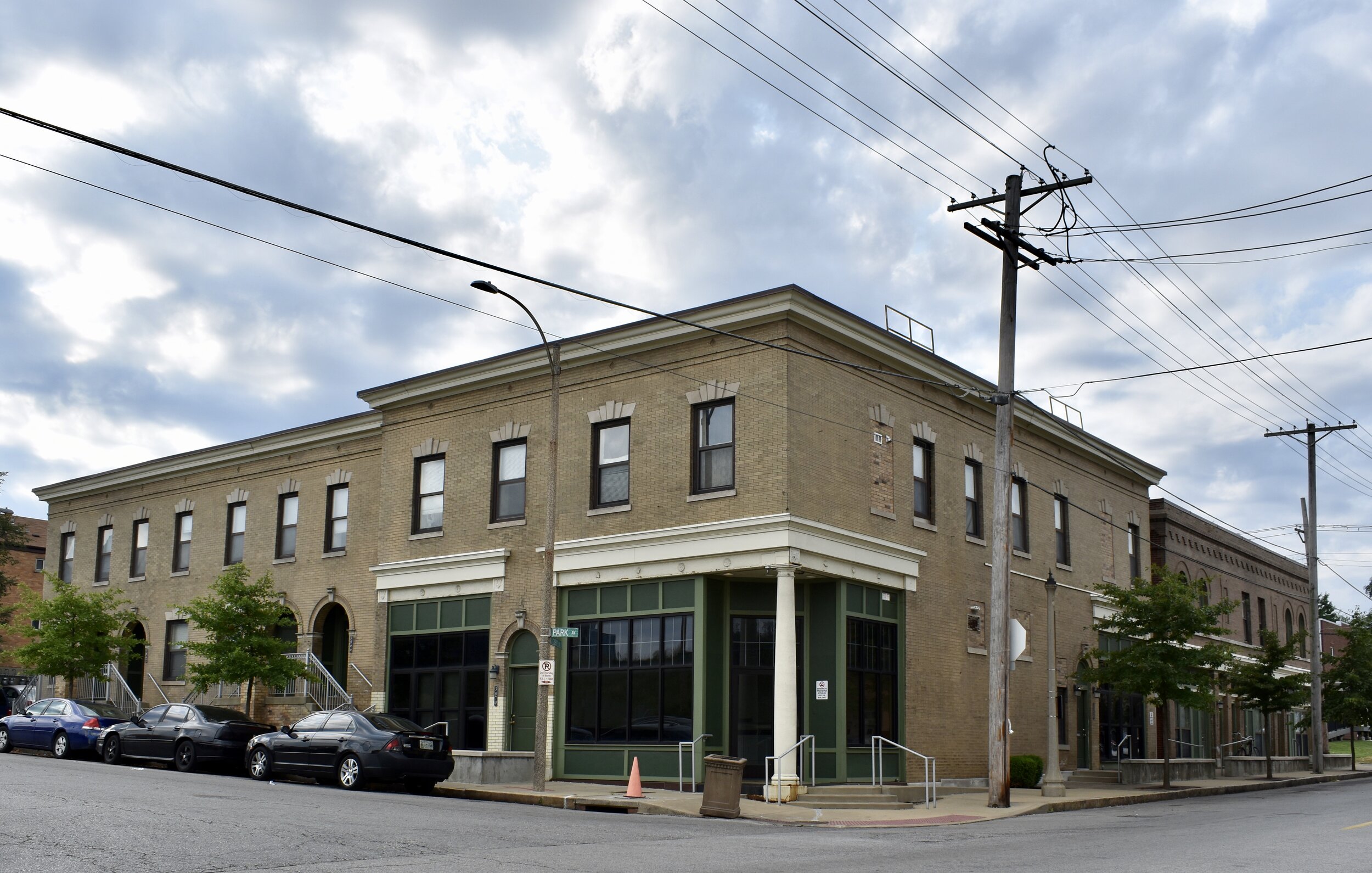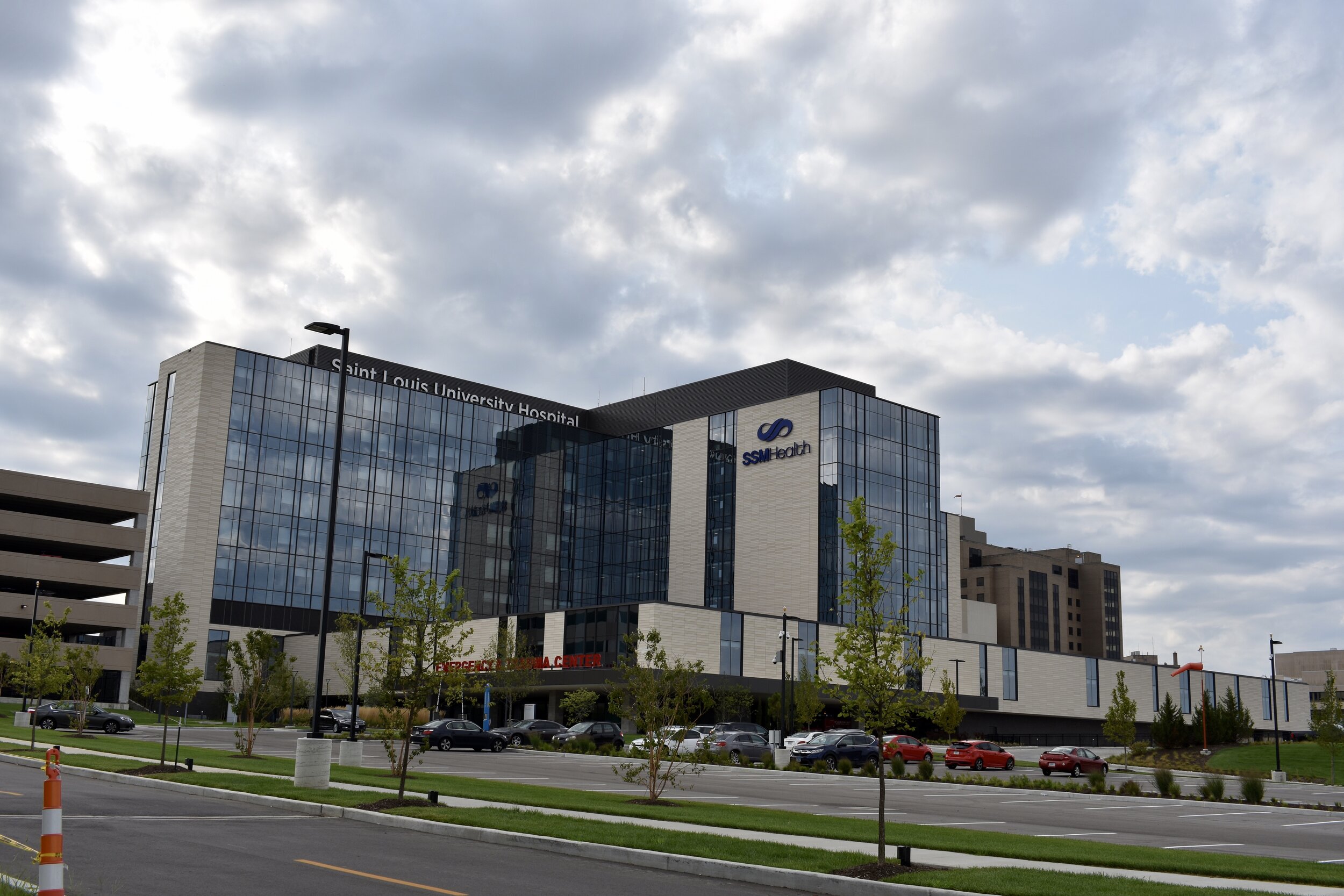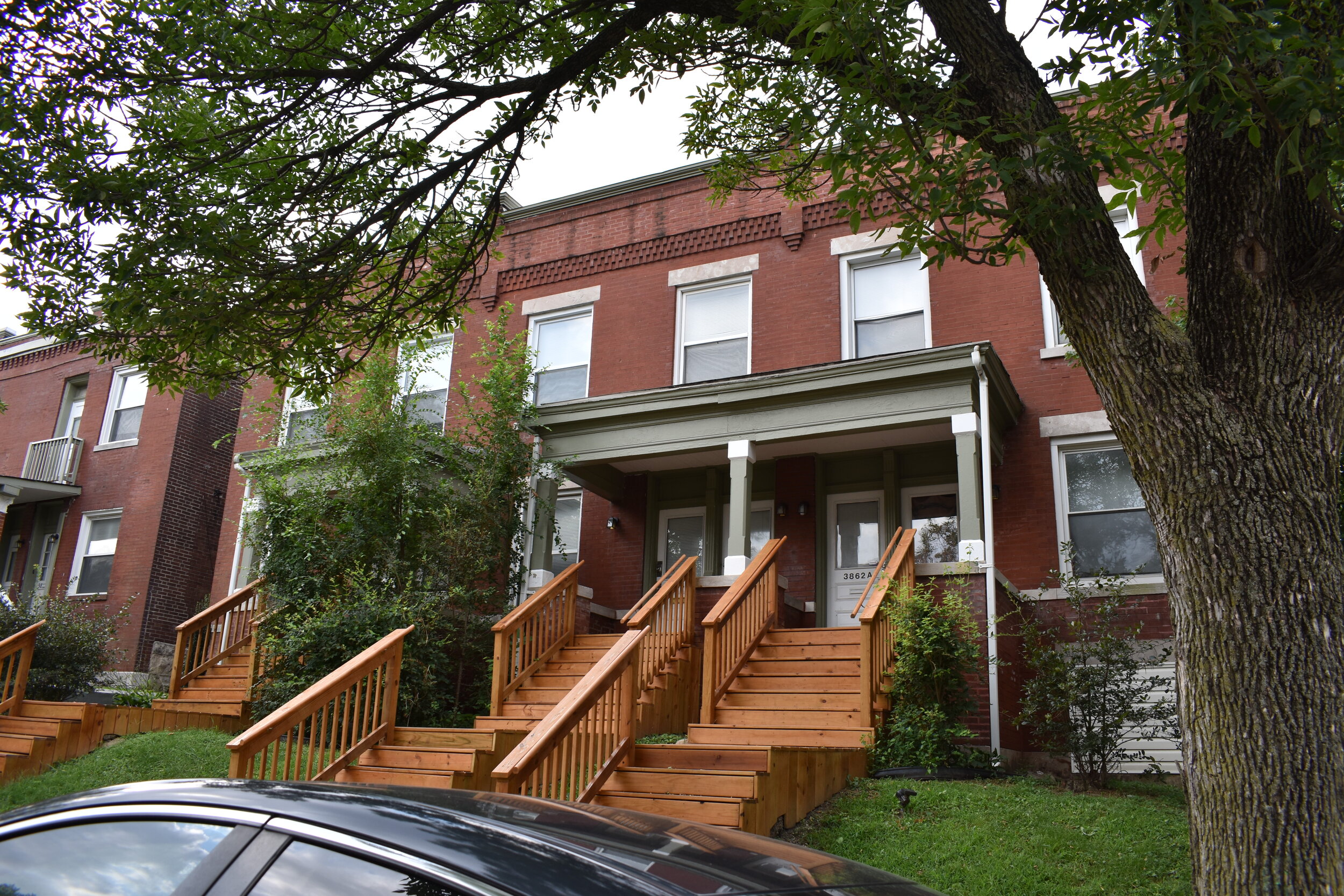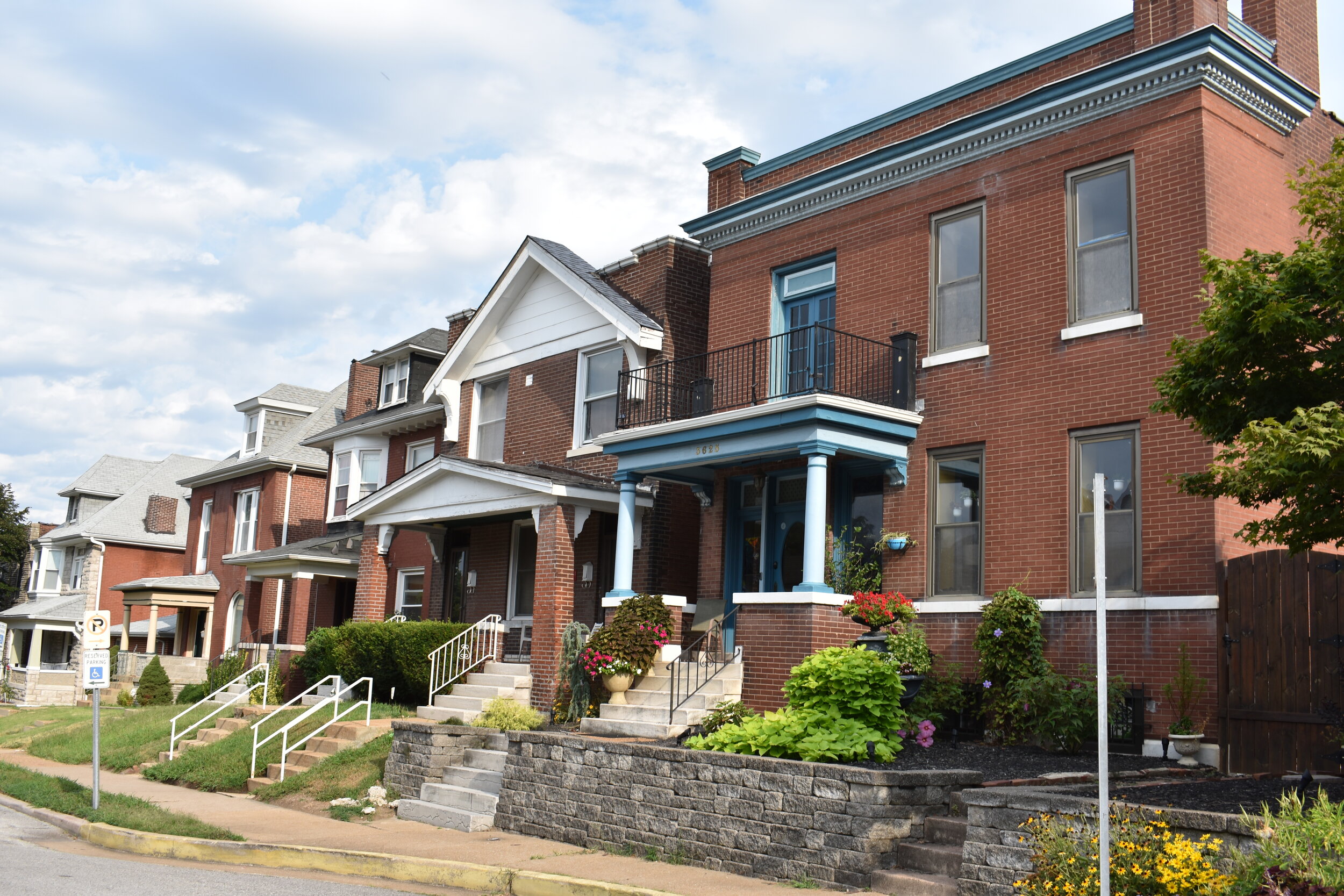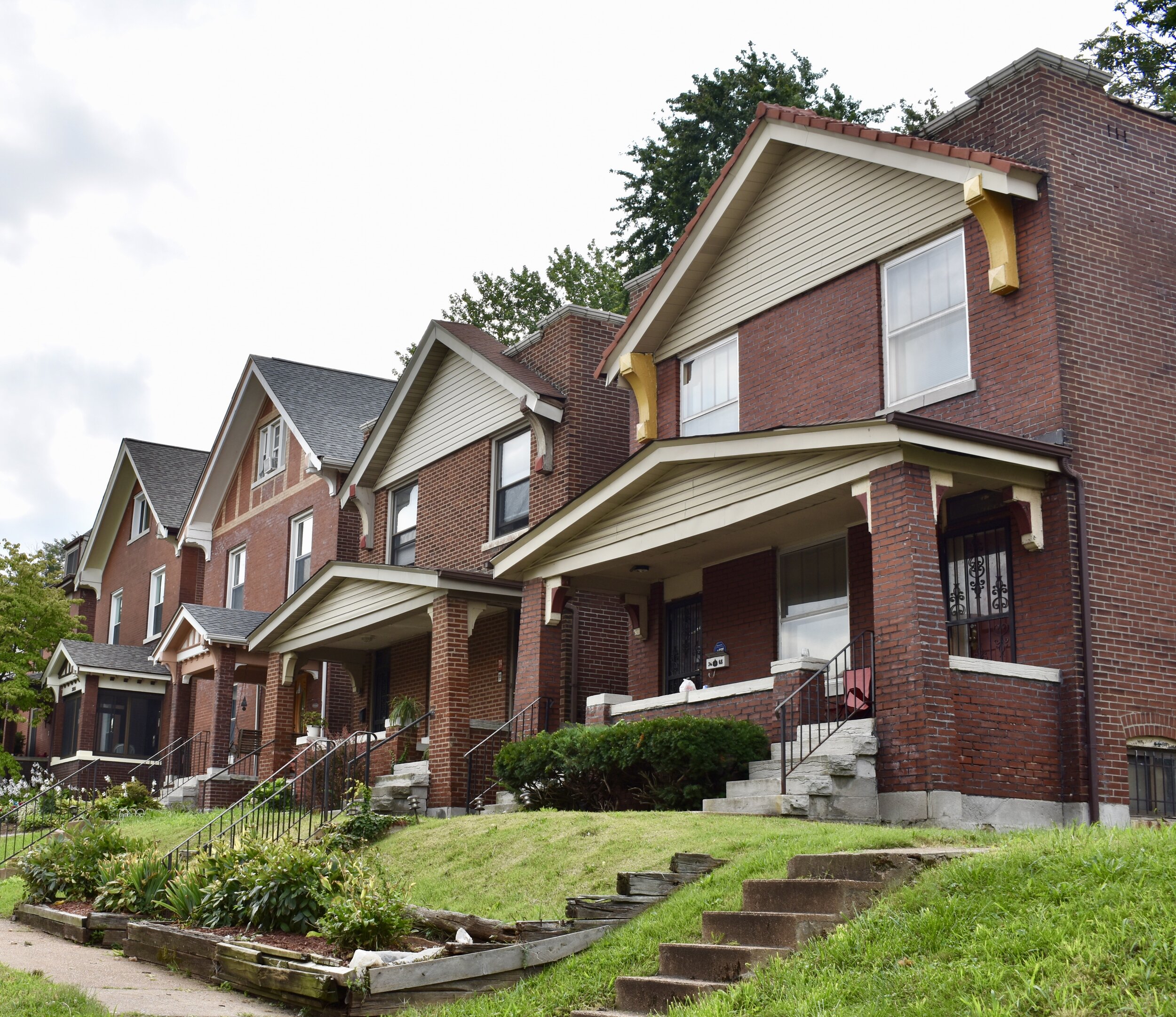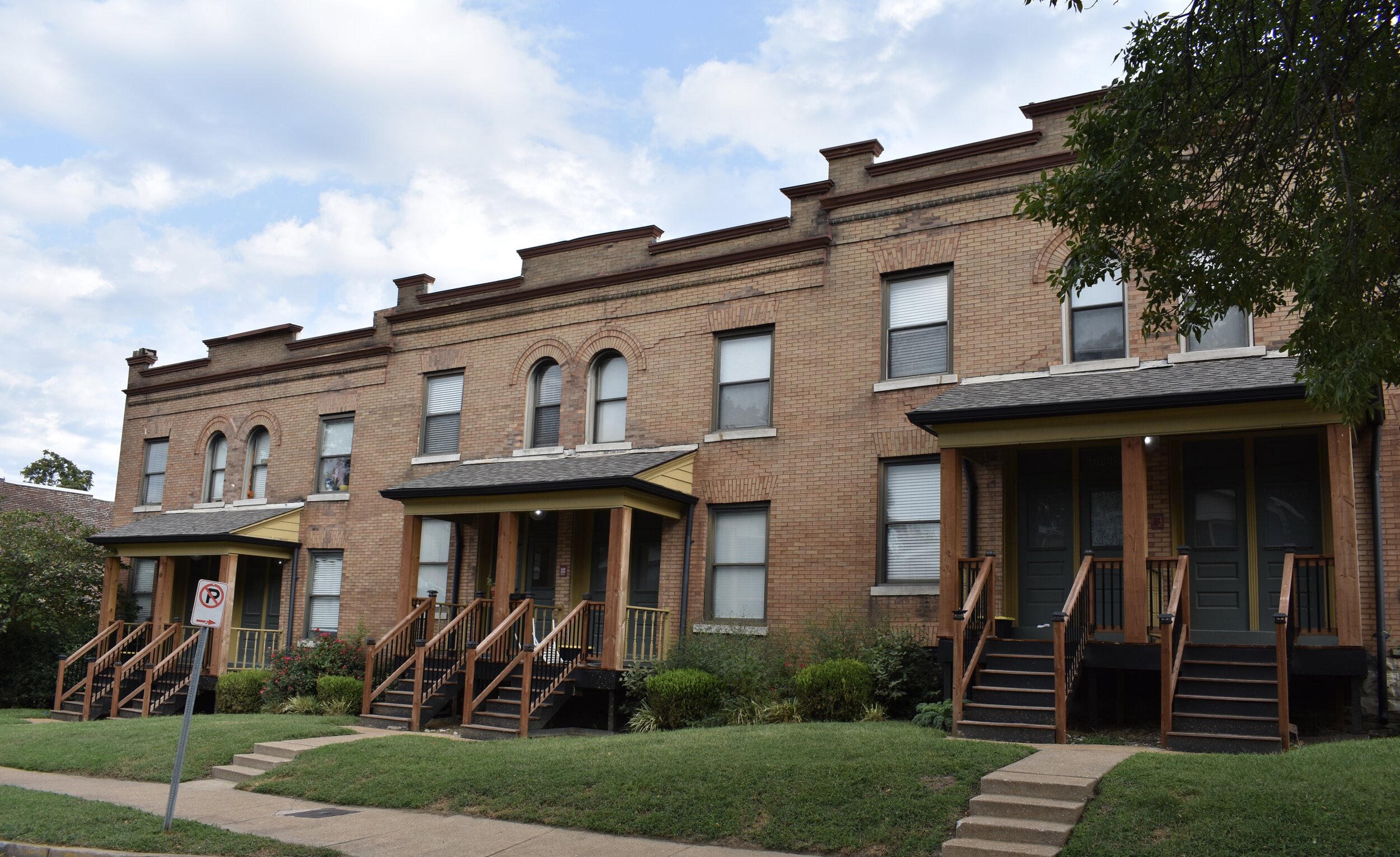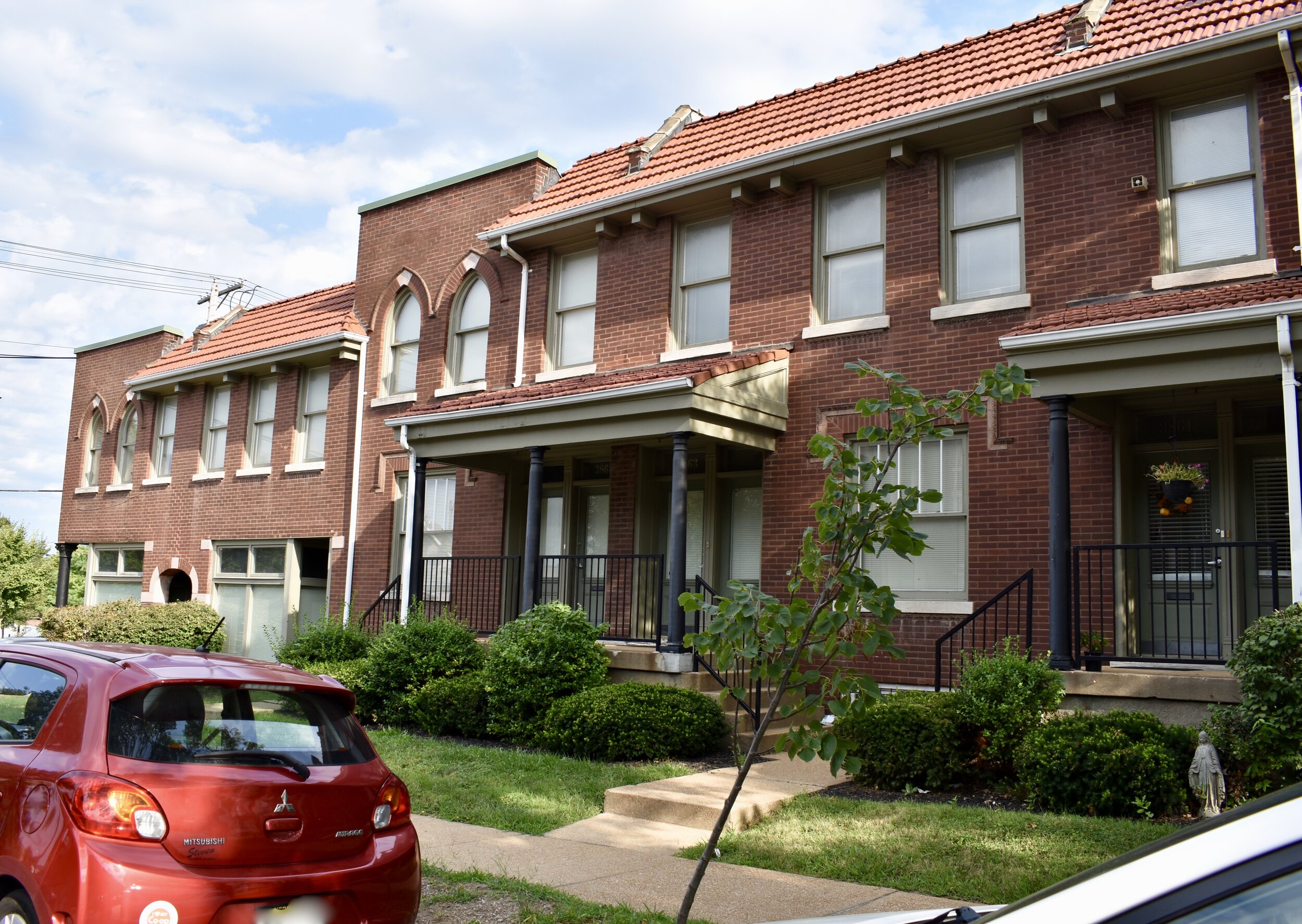Tiffany is a south St. Louis neighborhood bound by Chouteau Avenue to the north, I-44 to the south, Grand Boulevard to the east and 39th Street to the west:
This is a small neighborhood in both area and residential capacity, as most of the Tiffany neighborhood is comprised of the St. Louis University Medical Center including Cardinal Glennon Children's Hospital and SLU hospital. The north end of Tiffany is largely industrial, and is the site of the former Pevely Dairy.
The neighborhood takes it's name from the Tiffany streetcar line which started operation in 1890 with the opening of the Grand viaduct. The Tiffany streetcar line transformed the neighborhood into a middle-class commuters suburb. The area was originally platted out by the French in 1769; back then Grand was far beyond the edge of the settlement of St. Louis. By the 1860's much of this area had become property of Mrs. Mary McRee, who ended up selling most of the land to a developer in 1888. A portion of the area was subdivided into McRee City in 1869 and was developed by Mary McRee to take advantage of the horse carriage lines that were arriving in the area. Wow, this city has an amazing history. My source.
Mary Urquhart McKee is another distinguished woman in St. Louis' long history. She married Samuel McRee when she was 14 years old, she moved to New Orleans when her husband was serving the Army in the Mexican-American War. They moved back to St. Louis where they owned their land. Samuel eventually died of cholera and Mary donated her land to the City of St. Louis in 1869. Here's a picture of her wedding dress from 1823.
Parts of her land were still called McRee Town as recent as 2004 when the city made the decision to demolish many of the homes and re-brand the neighborhood to Botanical Heights.
So now that you have an idea of the history of the part of the city, let's take a look at who is living there now (as per 2000 data):
The Tiffany neighborhood was relatively stable from 1990 - 2000, showing a mere 1% population decrease down to 1,340 residents: 83% black, 12% white, 3% Asian and 2% Hispanic/Latino. There are only 571 housing units, at 88% occupancy rate, split 25%/75% owner/renter.
The Census data count in 2010 did not bring good news for Tiffany. Overall, the neighborhood lost 21% of its people. Largest decreases were white and Asian people who dropped 30% and 37%, respectively. Blacks left too, dropping 20%. The only increase was among Hispanic/Latino folks who jumped 36%, but that is deceiving, since there were only 15 counted. Housing took a hit as well where 40 fewer housing units were counted; occupancy dropped 10% and vacancy was up 17%.
The 2020 census counted 915 people, down another 6%. Racial shifts occurred with 63% Black, 26% white, 5% Asian, 3% Hispanic/Latino and 4% 2 or more races. They lost 32 housing units and occupancy is at 94%.
Almost 1 year ago, part of the Pevely dairy caught fire and collapsed, leaving a big hole in the street scape along Grand near Choteau. The final collapse of the building as well as the story of the fire was related by a captain in the fire department.
Here are some of the views along South Grand Blvd.:







Lafayette Avenue is visible just north of I-44. There are some attractive multi-unit apartment buildings as well as single family homes. Here are some of my favorites:





The vast majority of Tiffany is comprised of the SLU medical complex and the residential streets are purposefully and frustratingly disconnected from each other. Check out the map to see what I mean, there are very few through streets; but the homes that exist here are awesome:






^These condos have access to an in ground swimming pool directly adjacent to the property, to the right of the frame.










Check out the corner gem at Park Ave. and 39th Street:

Nearly all the homes on Hickory Street are unoccupied. I wonder if SLU owns these for future demo/expansion of the medical complex?


There is also a lot of open ground west of the hospitals. There is this weird demo where they left the entry ways, foundation and 1st story of bricks:

Some nice Dutch colonials on Rutger Street:

Tiffany is also home to a charter school called Imagine Academy of Environmental Science and Math (edit: closed just years later). A great re-use of an old warehouse and another quality educational option for St. Louisans. Edit: it now is part of SLU.


Tiffany pride:


***In September, 2020 I revisited the neighborhood and the following includes updated commentary and photos.***
Misses On Original Tour
I didn’t mention the vast acres of underutilized space that makeup the surface parking lots and trucking storage operations on the northwest section of the neighborhood. This is an unfortunate misuse of city property. Parking garages should be built for the hospital employees and the lots sold for development. This could become a bustling neighborhood once again with some housing for hospital employees and other residents. The 2020 Census data will likely show another slight loss for Tiffany. This could easily be reversed if the massive expanses of unused space became part of our city again.
I also missed some of the most amazing blocks of blonde brick beauties. I would put Blaine Avenue up there with the best in all of St. Louis for varied styles of blonde on blonde.
Noticeable Changes
A basketball court was recently installed in Tiffany Park. A $550M new hospital and ambulatory care unit have opened. All of the small homes I mentioned on Hickory and of course the Missouri Belting and Pevely buildings were lost. I’m glad I captured them in the 2010 post because they have gone to the landfill.
The charter school has since shuttered.
The gorgeous multi-unit. apartment buildings look great, and many of the homes along Lafayette which are so high profile from I-44 have seen some love. One apartment building at Lafayette and 39th had part of it taken down to make way for a ~10 space surface lot for residents.
There are several Habitat for Humanity homes that have been constructed, filling in some gaps. These are handsome and blend in affordable housing, a much needed regional asset.
Here are some updated photos of the densely packed, handsome homes, mixed use buildings and health care institutions.
What Are The Future Needs?
Short and simple, open the streets and add speed humps for traffic calming. The use of speed humps on Lafayette Avenue in the neighborhood has worked wonders, now it’s time to connect Tiffany to Botanical Heights, not isolate it.
I’d like to see more rehabbing of the amazing housing stock continue. I’d also like to see neighbors report the many junked/abandoned cars that line the streets in many spots.
I’d like to see a major preservation win for Tiffany with a new use for the former St. Louis University Hospital/Firmin Desloge hospital. This is a St. Louis icon and needs to find a new use, I’d prefer a residential component for students and interns.
With talk of a QT going in at the corner of Grand and Lafayette right at the I-44 on ramp the BP just up the street will likely close.
While no one will be jazzed about a gas station/junk food/liquor store, QTs are favorites of locals (I’ve come to learn) and an urban use on the former BP site would be huge. a new 3-5 story mixed use with a sandwich shop would be much welcomed by the nearby hospital employees and visitors.
Additional St. Louis City Talk Reading
Habitat for Humanity Homes in the Tiffany Neighborhood - May, 2019
Centered at the Hospital - July, 2020
SSM Health / St. Louis University Hospital Tour - August, 2020



